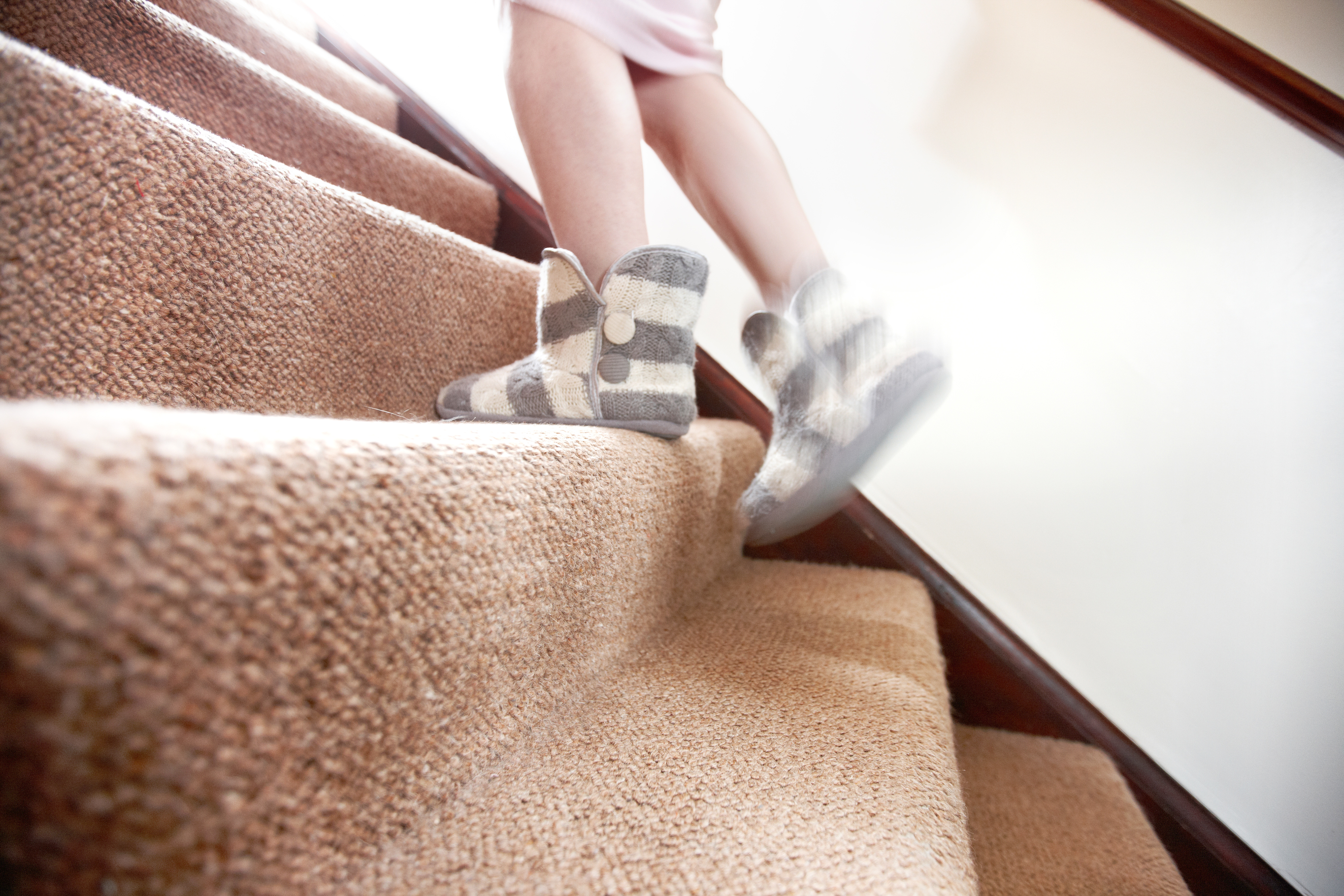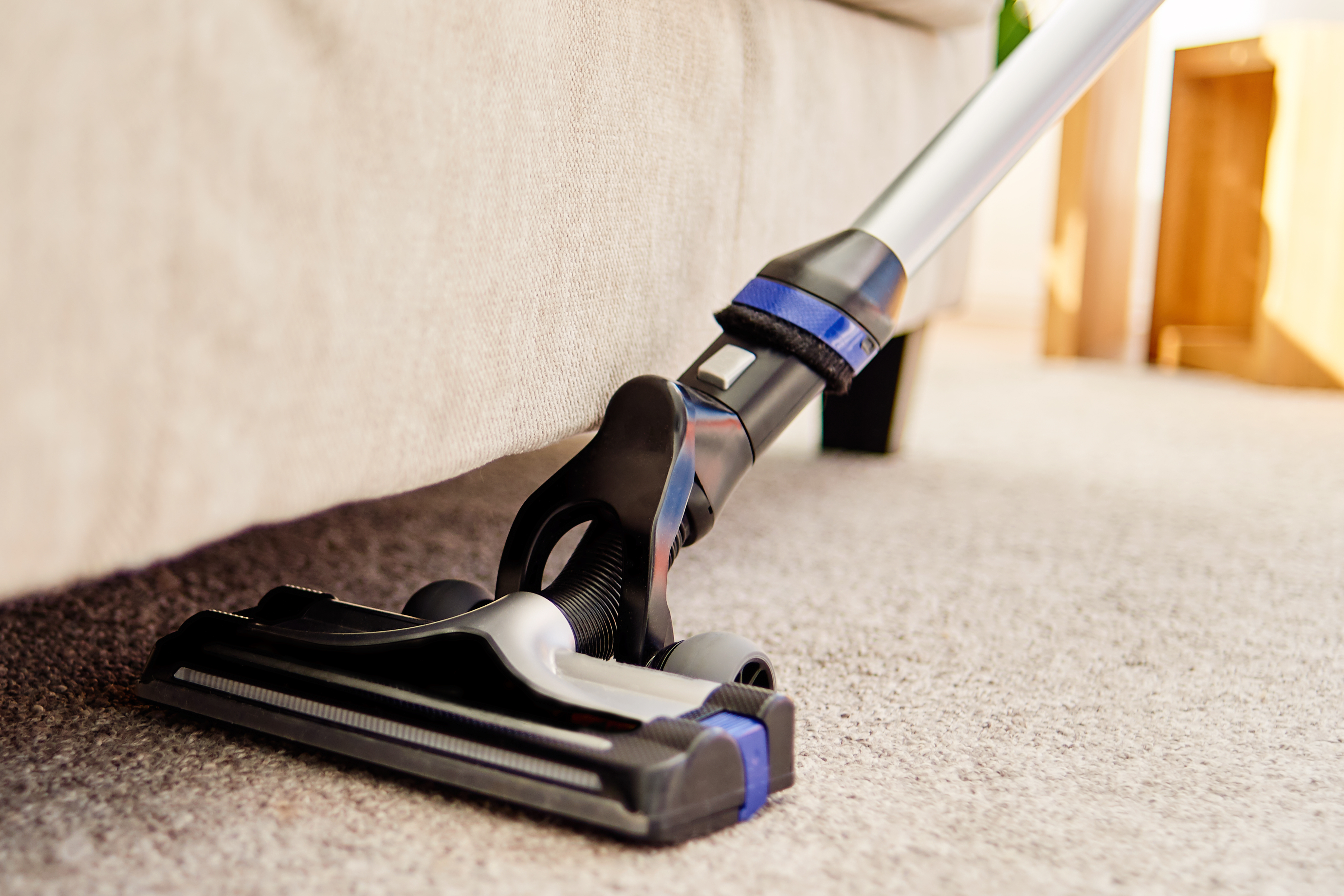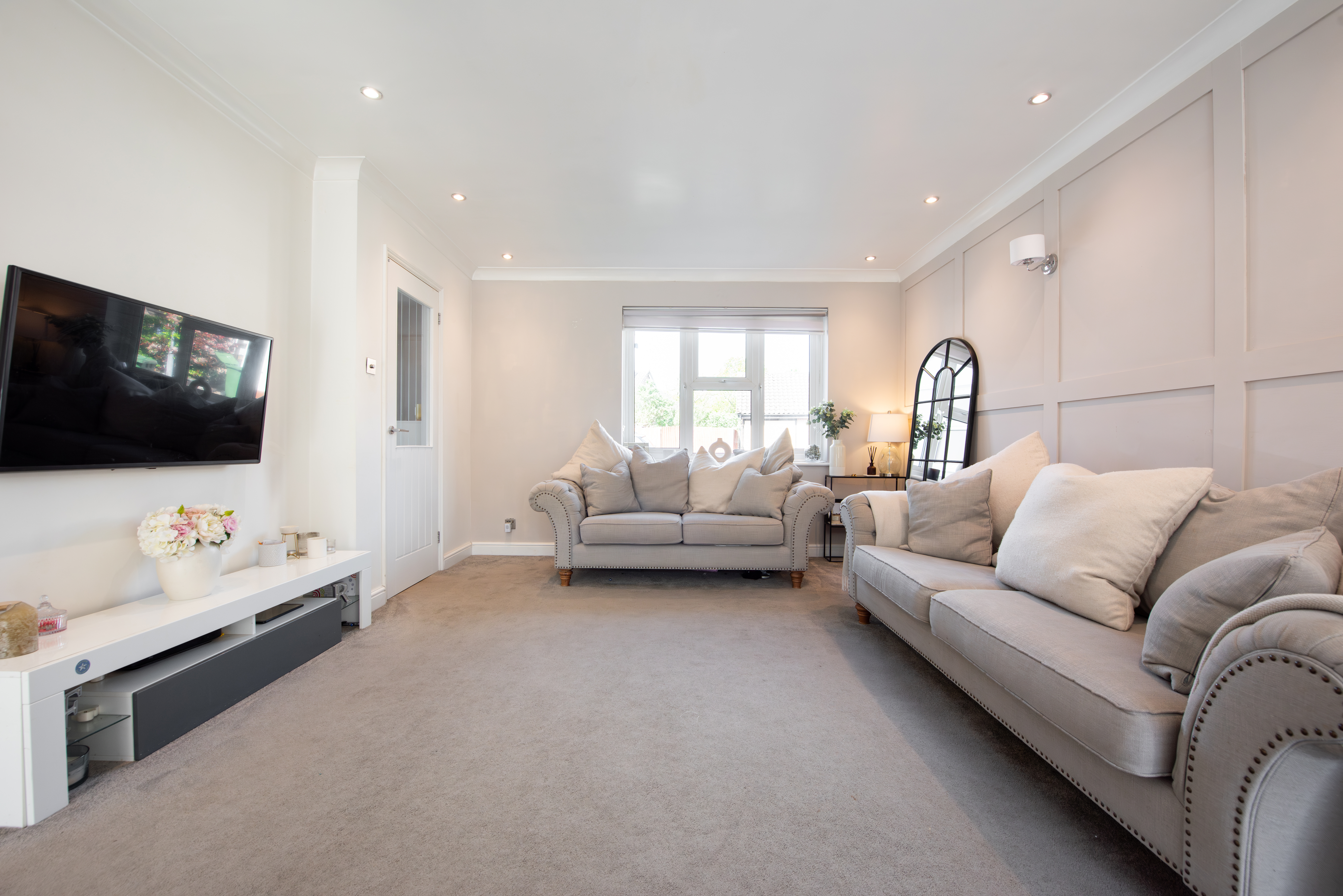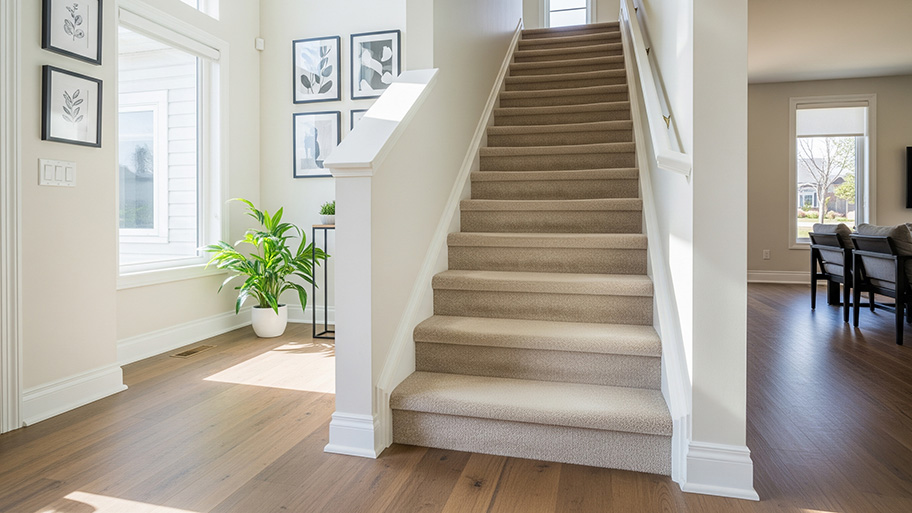
Carpet padding makes your carpet feel extra comfortable and protects your floors from damage, but how much does carpet padding cost? Let’s look at the numbers.
This luxurious carpet fiber will keep you warm, but not keep you dry


Wool carpets are either 100% natural wool or blended with synthetic fibers.
Wool is highly durable with natural stain and flame resistance.
This material costs more and requires more maintenance than synthetic fibers.
Keep your wool carpet away from water because it’s highly absorbent and dries slowly.
Wool carpets are tried and true with a centuries-long history. This is the natural fiber that most synthetic carpets try to emulate—and there’s a reason. It’s extremely durable and naturally stain-resistant. It's an epitome of the phrase, “They don’t make them like they used to,” but even then, it’s not the best fit for every home. Check out the biggest wool carpet pros and cons so you can pad out your room with peace of mind.
Wool carpets are made from natural wool fibers. The wool primarily comes from sheep breeds in Britain and New Zealand, but carpets can be mixed with synthetic fibers for enhanced durability and affordability. There are two types of wool carpets:
100% Wool: This type of carpet is made completely from natural wool fibers, not mixed with any other fiber. This gives the carpet the full benefits of wool, like softness and natural stain resistance, but it’s less durable in a high-traffic area. It’s also considered a higher-end product and comes at a higher price point.
Wool Blend: A wool blend carpet is made from natural wool mixed with synthetic fibers. This type of carpet helps balance out some of wool’s drawbacks. It has increased durability and higher stain resistance. High-quality wool blend carpets are made of 80% natural wool and 20% synthetic fibers.
| Pros of Wool Carpet | Cons of Wool Carpet |
|---|---|
| Naturally stain-resistant | Higher cost |
| High durability | Higher maintenance |
| Eco-friendly | Moisture issues |
| Flame-resistant | Potential for pests |
A local carpet installation pro can help you choose the right carpet for your needs. Below is an in-depth look at the pros and cons of this carpet fiber.

Wool is known for its natural, springy texture, which synthetic fibers try to imitate. This makes it feel comfy under your feet, but there are also a few other reasons to install a wool carpet. Here are the pros.
Wool has natural oils that help it repel spills and dirt, giving the material natural stain resistance—particularly against water-based stains. As long as you deal with a spill immediately, it’s unlikely the stain will seep into the inner part of the fiber, and a carpet stain protector can improve this resistance.
Wool carpets are extremely durable for years and still maintain their original color and springy texture. Because of the structure of the natural fiber, they’ll flatten less with foot traffic than certain synthetic fibers, and they'll hold onto the dyes that give them color.
As a sustainable natural fiber, wool is an eco-friendly flooring option. It’s biodegradable and recyclable, so when you’re done with your carpet, it doesn’t need to sit in a landfill. It’s also a great insulator that helps reduce heat loss during the winter.
Wool has a higher ignition point than synthetic fibers. In other words, it burns at a higher temperature and is less likely to light up if there’s a spark, making wool carpets a popular choice for high-traffic areas.

Wool carpets are a luxury product and considered a top-of-the-line choice. That said, there are some drawbacks to consider.
On average, wool carpet replacement costs between $4 and $20 per square foot, depending on the style and quality. This makes it considerably more expensive than other options like polyester—which averages $1 to $3 per square foot—or nylon—which costs about $2 to $5 per square foot.
The thing most homeowners notice about a wool carpet is the shedding. There will be an initial shedding period with a new carpet, but it’s nothing a quick vacuum can’t handle. Additionally, wool carpets are more difficult to clean than other fibers. Water isn’t an issue if you air-dry your carpet, but oil and grease can permanently stain it. Many household cleaners can damage your wool carpet, and you may need to hire a carpet cleaning pro.
Wool is naturally absorbent, which is good when it comes to moderating in-home humidity, but it can be a problem if there’s excessive moisture. In other words, don’t put a wool carpet in your bathroom or anywhere it will regularly encounter splashes and wet feet. Since wool retains liquid, it can harbor mold and mildew.
Wool fibers are food for moths and carpet beetle larvae, so a pest infestation is a definite risk. To keep these critters away, wool carpets are treated with a mild insecticide. Look for signs of these pests, like bare spots on the carpet or larval skins. You’ll need a pest control specialist to rid your home of them.
Wool isn’t the only carpet option, and you can choose from different types of carpet fibers. Consider whether one of these alternatives is a better option for your home:
Polyester (P.E.T.): Polyethylene terephthalate, which most people know as polyester, is a budget-friendly alternative to wool. It’s one of the most affordable carpet fibers with a remarkably soft underfoot feel, but it’s not as durable as other fibers.
Nylon: Nylon carpet is the most popular synthetic carpet fiber. It’s renowned for its resistance to stains, liquids, mold, mildew, and allergens. It’s soft underfoot but resilient enough to handle high-traffic areas.
Polypropylene (Olefin): Polypropylene is a water-resistant alternative to wool. Because of its manufacturing process, it has superior stain resistance compared to other types of carpet. The fibers cannot absorb liquid and will not fade from sun exposure, but they’re not as durable as other options and are better suited to low-traffic areas.
Wool carpets are a great choice for many homes, especially in high-traffic areas or rooms where you want a cozy underfoot feeling. That said, they may not suit every circumstance. Because wool is so absorbent, you’ll need to keep this fiber away from areas that come into direct contact with water. Synthetic fibers are ideal for mudrooms, bathrooms, or finished basements with moisture issues.
Wool may also not be the best carpet for families with pets and kids because it can be difficult to clean oil-based stains once they set in, even if the material is more durable than synthetic fibers.
From average costs to expert advice, get all the answers you need to get your job done.

Carpet padding makes your carpet feel extra comfortable and protects your floors from damage, but how much does carpet padding cost? Let’s look at the numbers.

The cost to carpet stairs depends on the number of stairs, material choice, and staircase type. Read on to calculate your project expenses

The average range to remove carpet costs $120 to $720. Contractors base carpet removal costs on square footage, home location, and installation type.

Rugs and carpets play different but important roles as flooring options in your home. Here’s what to think about when comparing these two popular options.

Slippery carpet stairs could get you down—literally. Fortunately, these five tips will keep your steps nice and steady, even if you keep the carpet.

Learning how to stretch carpet is a great way to protect your investment and keep everything tidy. Here are the steps to successfully restretch carpet on your own.